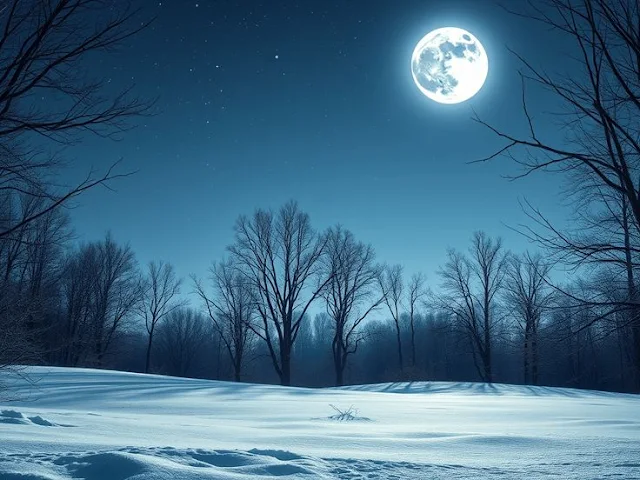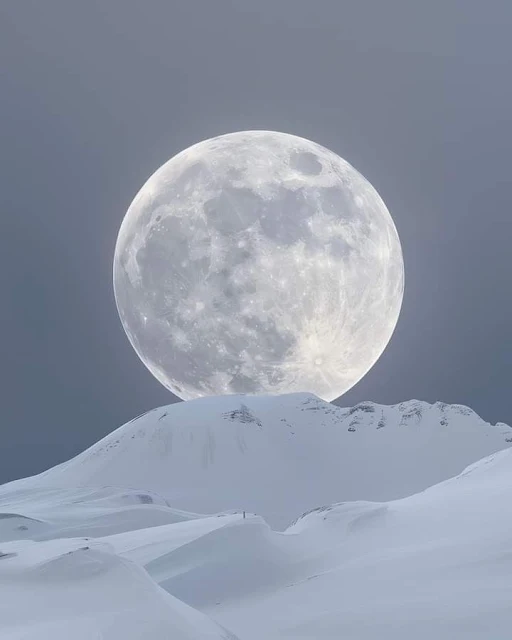Snow Moon 2025: How to See February 2025's Full Moon
February 2025 brings a stunning astronomical event that stargazers and skywatchers alike won't want to miss: the Snow Moon. This full moon, which occurs on February 14th, promises a bright and beautiful sight for observers around the world. Whether you're an experienced astronomer or simply someone who loves gazing at the night sky, here’s everything you need to know about how to see the Snow Moon in February 2025.
What is the Snow Moon?
The Snow Moon is the name traditionally given to the full moon that occurs in February. This moniker originates from the typically heavy snowfall in North America during this time of year. Historically, it’s been associated with the cold, winter months when snow blanketed the landscape. For many, the Snow Moon is one of the brightest full moons of the year, offering a stunning view for observers in the Northern Hemisphere.
In 2025, the Snow Moon will be especially noticeable because it will coincide with the perigee, the point in the moon’s orbit when it’s closest to Earth. This means the moon will appear larger and brighter than a typical full moon — making it a perfect opportunity for photographers, astronomers, and anyone interested in celestial events.
When to See the Snow Moon in 2025
The Snow Moon will reach its peak fullness on February 14, 2025, at 1:52 PM UTC. However, the moon will appear full for about three days surrounding this date, so you’ll be able to enjoy its beauty even before and after it reaches its full phase.
For those in the Northern Hemisphere, the best time to view the Snow Moon is during the evening and early night hours, as the moon will rise in the east around sunset and set in the west around sunrise. If you live in a location with clear skies, you can expect a bright, large moon throughout the night.
How to See the Snow Moon: Tips for Best Viewing
To fully appreciate the Snow Moon in 2025, follow these simple tips to ensure a fantastic viewing experience:
-
Find a Dark Location: Light pollution from city lights can diminish the brightness and clarity of the full moon. Try to get away from artificial light and find a spot in a park, open field, or a high point with a clear view of the horizon.
-
Check the Weather Forecast: Clear skies are essential for optimal viewing. Be sure to check the weather in your area before heading out, as clouds or fog can obscure your view of the moon.
-
Use a Telescope or Binoculars: While you can see the Snow Moon with the naked eye, using binoculars or a telescope can enhance the experience, allowing you to see more detail on the moon’s surface, such as its craters and maria (the darker, flat areas).
-
Plan for the Right Time: The moon will rise in the east shortly after sunset and will be visible throughout the night. If you want to see the moon at its highest point in the sky, aim to view it around midnight. The Snow Moon will appear especially stunning as it rises, often casting a warm glow over the landscape.
-
Take Photos: The Snow Moon can be a striking subject for photographers, especially when it’s near the horizon. Capture the moon with the natural environment, such as trees, buildings, or mountains, to add a sense of scale and beauty to your shots.
Why the Snow Moon is Special in 2025
In addition to being a regular full moon, the Snow Moon in February 2025 will be a super moon. A super moon occurs when the full moon coincides with the time when it is closest to Earth in its elliptical orbit (the perigee). Super moons appear up to 14% larger and 30% brighter than typical full moons. This makes the Snow Moon an especially mesmerizing event to witness.
Astronomers also note that the Snow Moon will fall near the time of lunar apogee, another rare moment when the moon will appear to be slightly farther from Earth than usual. This phenomenon will enhance the contrast between the slightly larger and brighter super moon at perigee and its cousin at apogee, offering sky watchers an exciting comparison between these celestial events.
Other Celestial Events to Look for in February 2025
February 2025 offers more than just the Snow Moon. The month also features a penumbral lunar eclipse on February 5, 2025, where the moon will pass through Earth’s outer shadow. While this eclipse won't be as dramatic as a total eclipse, it will create a subtle dimming of the moon that can still be a fun event to watch, especially if you're keen on celestial phenomena.
Conclusion: Don’t Miss the Snow Moon 2025
Whether you're a seasoned sky watcher or a casual observer, the Snow Moon of February 2025 offers a rare opportunity to see the moon at its brightest and largest. Take the time to find a dark, clear location, bring your binoculars or telescope, and enjoy this stunning celestial display. With its close proximity to Earth, the Snow Moon will shine brightly in the sky, leaving you with unforgettable memories of one of the most spectacular full moons of the year.
Mark your calendars for February 14, 2025, and get ready for an unforgettable experience under the stars!
Want More Sky watching Tips?
If you love stargazing and want to learn more about upcoming celestial events, be sure to check out our monthly guides to full moons, eclipses, meteor showers, and other exciting astronomical happenings. Stay tuned for updates on the best sky watching events in 2025 and beyond!





No comments:
Post a Comment